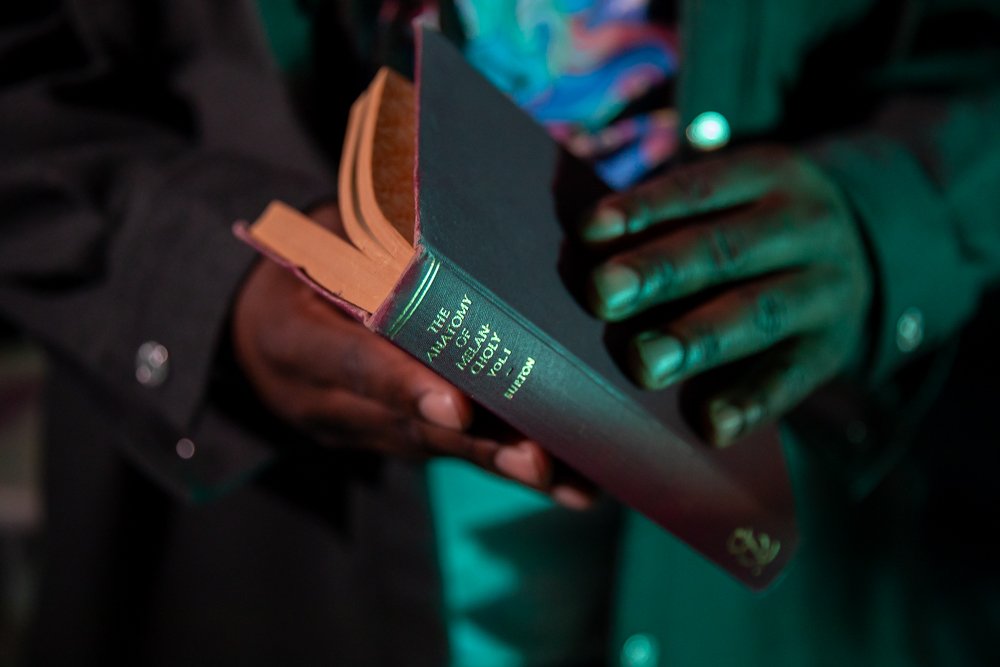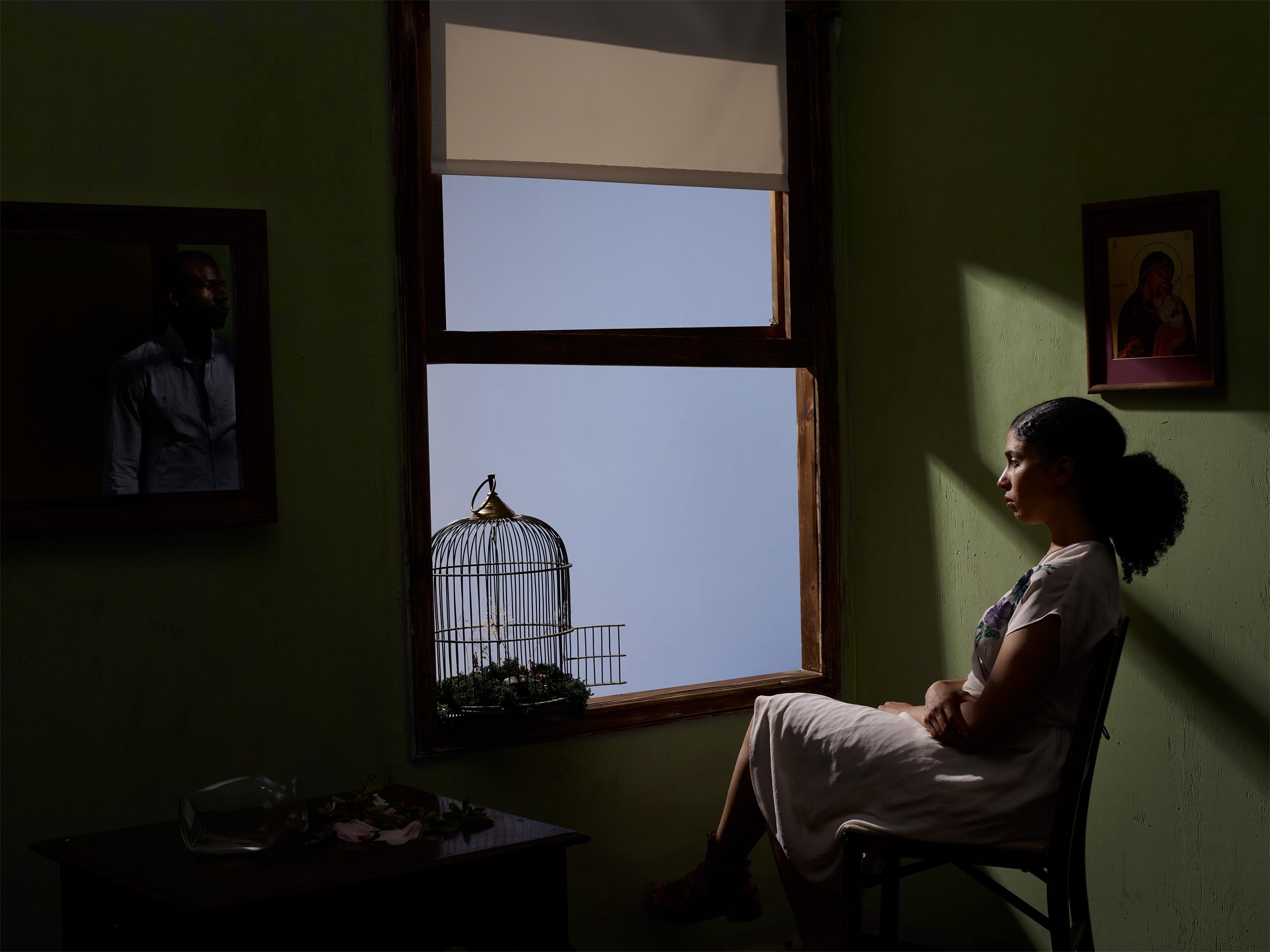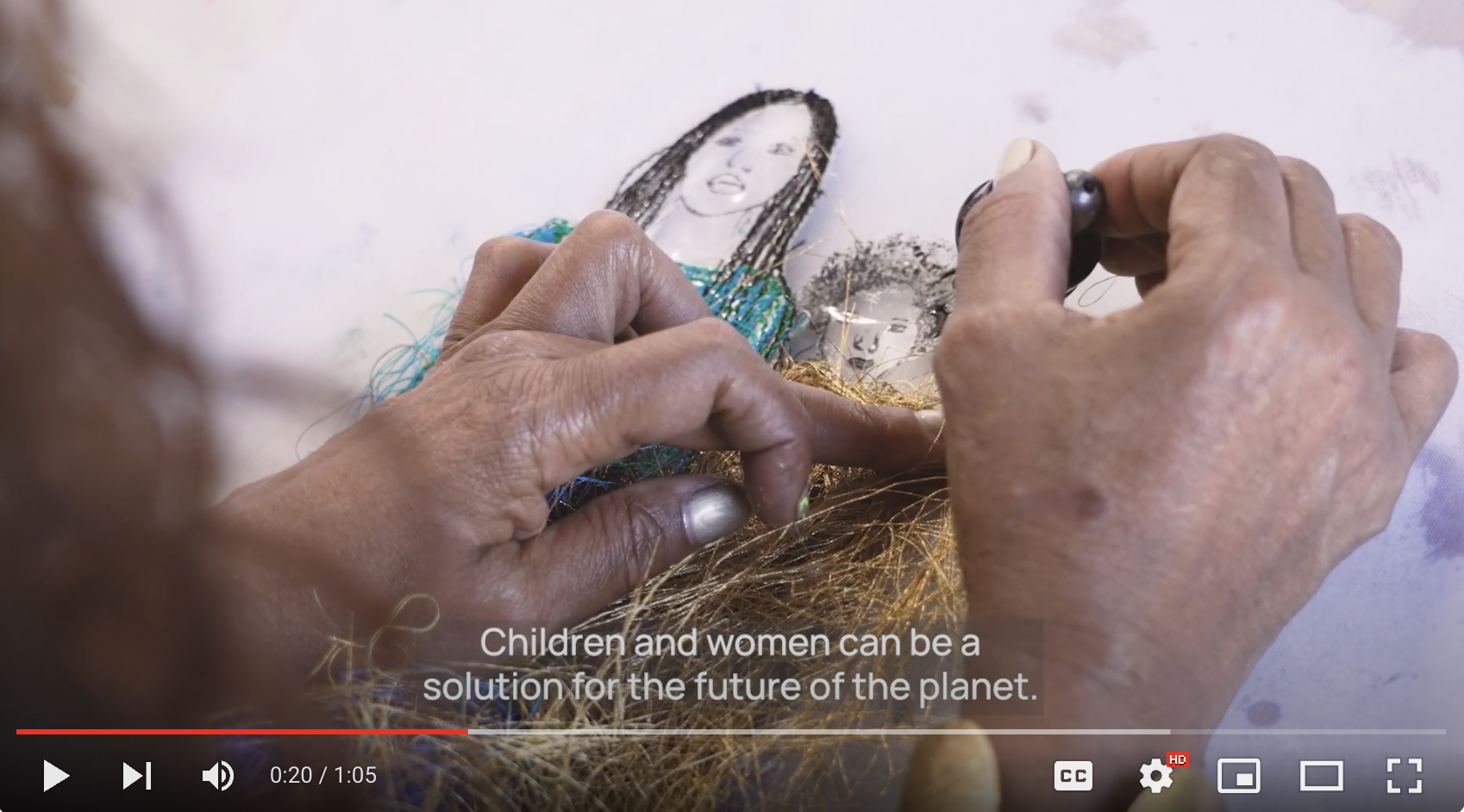January 2024
Merik Goma
Film directed by Alexa Caravia for Fountainhead Arts
On the shelf towards the front of Merik Goma’s New Haven studio are monographs he has collected. There’s Lorna Simpson, Erwin Olaf, Miles Aldridge—artists who, like Goma, have a penchant for highly staged photographs. In the middle of his studio, Goma has constructed a theatrical set for one such photograph, the latest in his series Night Was Fraught With Blue Devils, titled after a line from one of his poems. On my studio visit in February 2024, I lingered over details of the set—a wooden radio console, nicotine stains on the dressed-up wainscotted wall, the wall with a door and a window built-in. Goma told me he imagined this scene looking at photographs of people dancing at home in the 1950s and 60s. His photograph, when it’s finished, will show a couple embracing in the evening, mid-sway, dancing slowly. Their dance together may be their ritual, how they softly reset as day turns to night.
In his practice, Goma is set builder, prop shop, director of photography, and one-man costume, lighting, and concept department. He did a lot of reading and writing during his residency at Fountainhead in Miami, expanding the worlds around his photographs. His interest in interiority kept him thinking in the realm of Kevin Quashie’s 2012 book In The Sovereignty of Quiet: Beyond Resistance in Black Culture, which argues for nurturing an understanding of quiet, of expansive inner life for Black people as individuals full of stillness, longing, vulnerability, beauty, and sometimes disarray. “Quiet is like the moon,” Quashie writes, “rarely showing its full wondrous sphere and instead offering slivers of its potent, tide-shifting self.” What is at stake for Quashie and Goma are lives that are full, fluctuating, inward, undisclosed, and–Quashie asserts–largely unfamiliar in mainstream thinking. Blackness shouldn’t only be about lives in public, societal ills, resistance, and social change.
Goma talks to the actors he hires while he photographs them, giving them cues. “Imagine you’re waiting for someone and realize they’re not coming,” he might say. A photograph from Goma’s recent series Your Absence Is My Monument shows a woman sitting in a kitchen. There is smoke in the air. There are dishes in the sink, a phone receiver off the hook, and an agitated jumble of foliage on the table. The woman holds a photograph in her hand and looks at it. It appears to be a picture of a boy. She is quiet. Her gaze is serious. We don’t know, but she could be mournful, wistful, disapproving, mustering courage, about to formulate a plan, wanting to stay and sit in silence, all of the above, or more.
Words by Marcus Civin






Explore More Films








